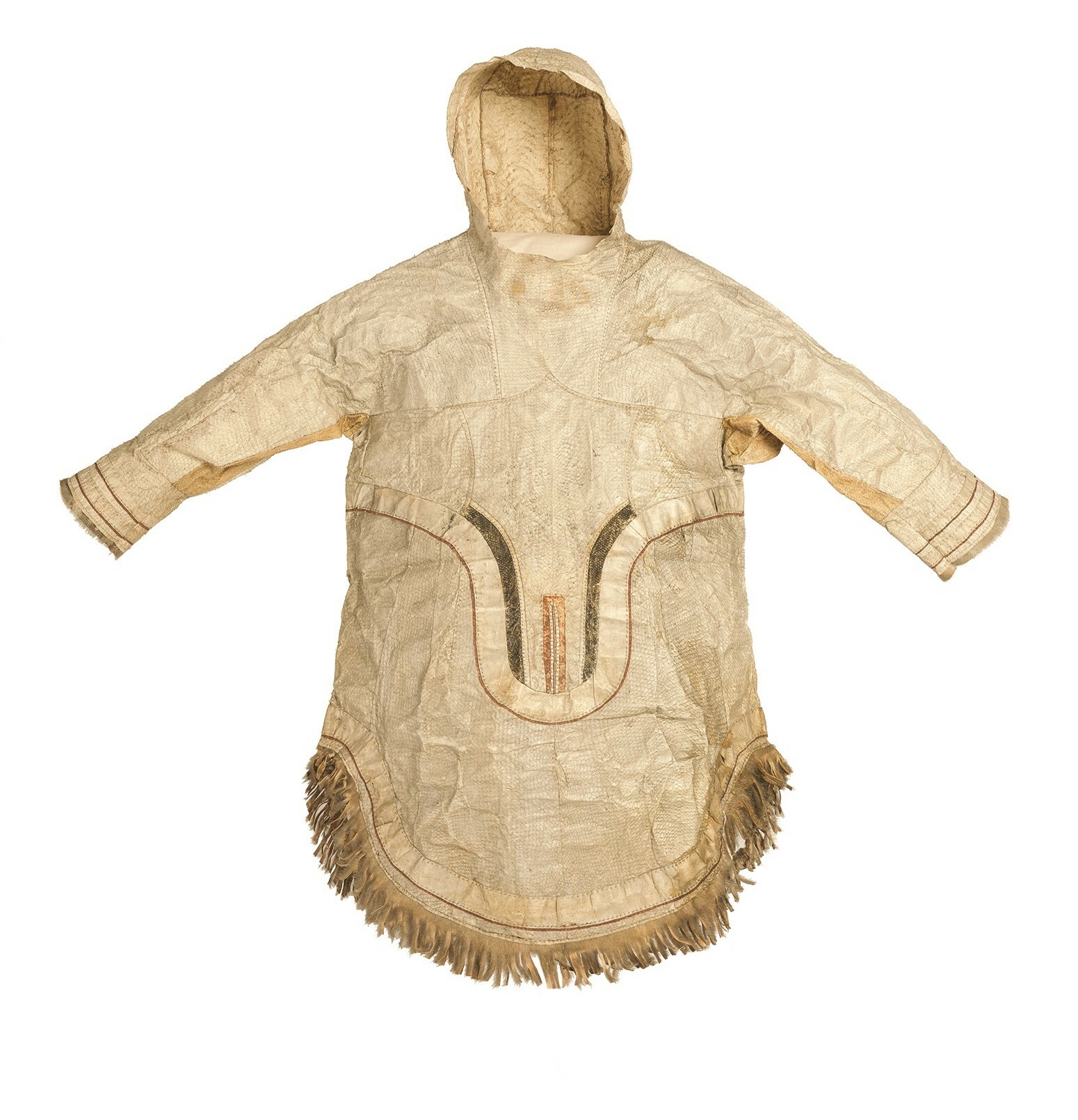To make packing for the Museum's move as simple as possible, we try to use standard boxes and packing solutions wherever we can.
But with 2.3 million taonga (treasures) of many different shapes and sizes to be packed, it's inevitable that some need a packing method tailored to their unique requirements.
Recently, a qasperrluk, a salmon-skin parka made by indigenous North Americans, required a bespoke solution to be safely moved from our Textiles store to secure offsite storage.

The salmon skin the parka is made from is both delicate and brittle, having dried out and set in its current position. Mounted on a body form, its arms stick out stiffly to either side.
It's an awkward size. The parka's armspan is as wide as its height which means it doesn't fit in the compactor units we keep our textiles collection in.
With some helpful advice from our Exhibitions team, I built a special box for the qasperrluk from corflute. Many people will be familiar with corflute from real estate signs, but it's also used by many museums for boxes because it's light, strong, waterproof and chemically inert. Most commonly-used cardboard boxes contain acids which can damage taonga over time.
The box for the qasperrluk needed to be sturdy enough to hold its shape. Having sides or a base that flexed would result in the box sides knocking against the parka inside. I used a plywood base to give the box some rigidity.
The garment's dimensions meant its box was too big to be made from a single corflute sheet, so I had to give special consideration to making the joins strong and in the most sensible places. The front of the box can be folded down for ease of access and there are handles on either side so it can be carried.
The qasperrluk is one of the most labour-intensive objects we have packed so far, but it shows the lengths we need to go to in some cases to protect some of the precious taonga we care for.
You might be wondering how Canterbury Museum came to care for a North American salmon-skin parka. This qasperrluk was donated to the Museum in 1892 by Edward Atherton Lingard, Archdeacon of Akaroa and Vicar of St Luke's, Christchurch. It was one of a number of objects acquired in Alaska by Edward's son William "Wandering Will" Lingard, who was working to map the Alaskan-Canadian border with the United States Coast and Geodetic Survey party. You can read more about Wandering Will's adventures here.
Becky Helliwell is Collections Technician Human History





